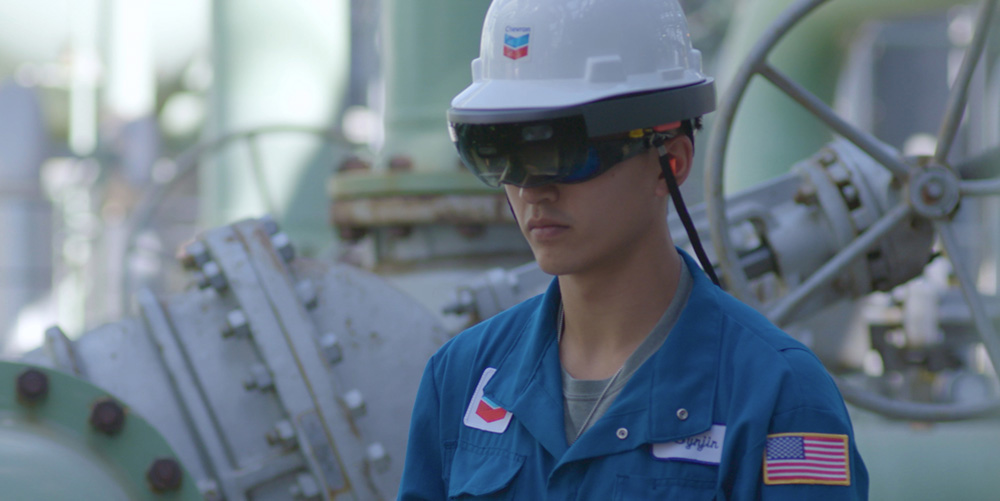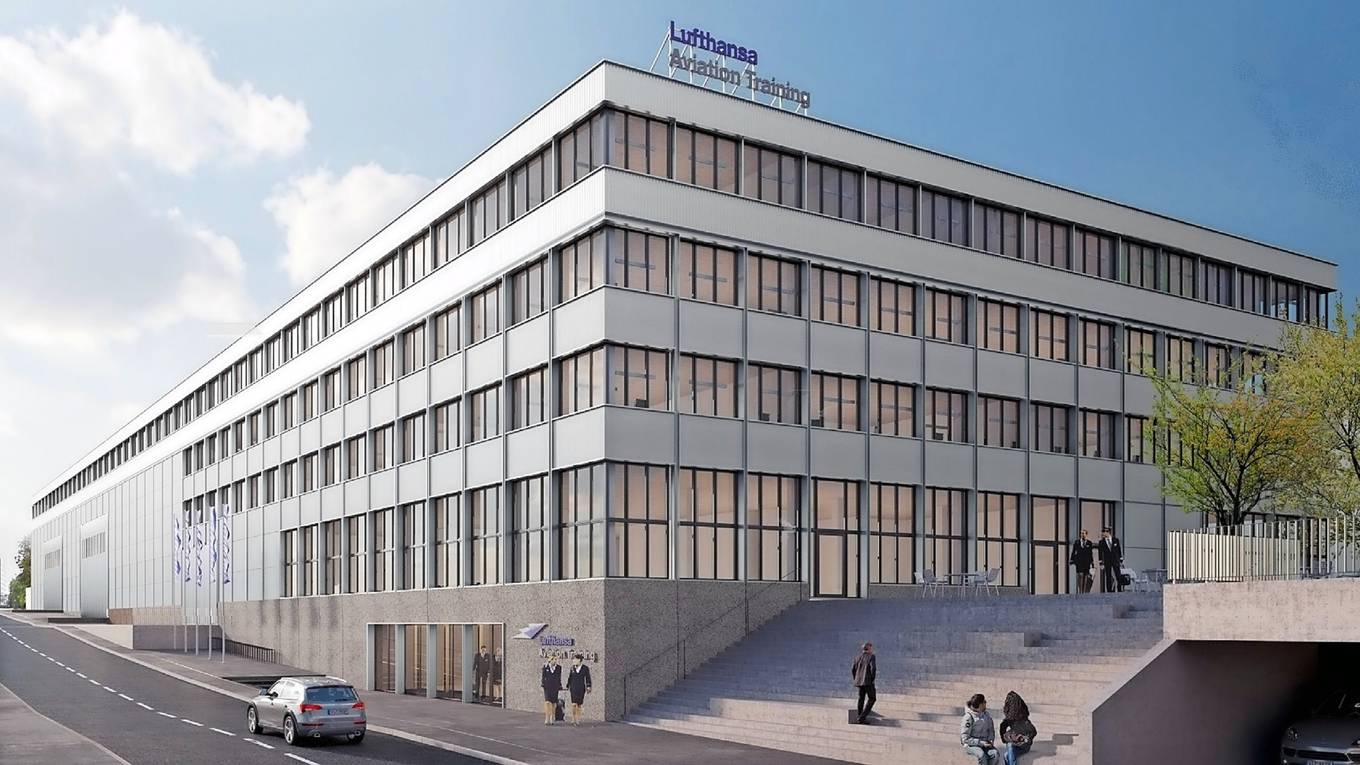A technology called HoloLens is showing us that the future is now, as it makes sci-fi virtual teleporting a business reality for safer operations and to address issues more quickly on the Chevron front lines.
HoloLens, a headset that operates as a fully self-contained holographic computer, coupled with Microsoft Dynamics 365 remote assist, enables users to troubleshoot problems by connecting field personnel with subject experts located around the world.
did you know
We followed in great footsteps with AR technology. Our use of HoloLens is derived from NASA’s prior adoption of similar remote collaboration between earth and space on the International Space Station Project.
Our use of this technology is derived from NASA’s prior adoption of similar remote collaboration between earth and space on the International Space Station Project. Learning from NASA’s experience, Chevron technical experts foresee many potential ways to work with business units to remotely solve design, operational and other technical problems to ensure a facility’s ongoing reliable operations – all without incurring expensive, time-consuming travel.
microsoft and chevron team up to deploy hololens AR technology
Microsoft video (Chevron is permitted to share and collaborated on the work) featuring Chevron’s use of HoloLens augmented reality technology.
how the microsoft hololens works
A worker in a field location simply dons the HoloLens headset that is attached to a hardhat. The HoloLens is a wearable Windows 10 PC with a camera, microphone and speakers built into the headset and connects onto the Chevron network via internet connection. The remote expert, who might also be at home depending on the time of day, can see on his or her computer monitor exactly what the field-based representative is seeing and guide him or her step-by-step through a resolution, thereby increasing efficiency and effectiveness. “In addition to seeing each other, the HoloLens allows the user and the remote expert to share data – such as manuals and drawings – at the press of a button,” said Bisram “Sam” Samlall, Technology & Innovation team lead at El Segundo Refinery. “And they can ‘draw’ on what they are seeing in full three dimensions.”
“Our use of HoloLens’ remote expert technology in an increasing number of our business units demonstrates our Chevron Way value of differentiating our performance through technology,” said John O’Brien, R&D Portfolio Manager, ETC Facilities Engineering Department. “HoloLens can reduce travel and stress, improve safety and enable experts to work in a collaborative space for fabrication and other tasks.”
Facilities Engineering recently developed a proof of concept (PoC) program using HoloLens at the expansion project of the Jack/St. Malo field in the U.S. Gulf of Mexico. Design engineers took 3-D models of the designs and holographically projected them at full scale into a conference room. These dimensionally precise holograms allowed them to see exactly what the model would look like and test for clearance, safety and other design issues before a single part was fabricated.
“This tool allows you to gain a much better and more practical perspective of the model and allows you to physically reach up or bend over to access valves and other equipment.”
Ed Moore
Senior Technology Strategist, Chevron Energy Technology Company (ETC)
“The Operations team was very excited about being able to get a physical understanding of their surroundings in the model for checking the maintainability and operability of equipment.”
The proof of concept helped to establish that HoloLens can be used effectively both in fabrication yards and offshore and has capabilities for field verification during construction and in brownfield environments.
“You can overlay the model onto a skid in the fabrication yard — or offshore on the floating production unit — to conduct verifications,” said Gary Fischer, general manager, Special Projects, Project Resources Company. “It allows the user to quickly identify potential design or safety concerns. And it’s very helpful to be able to pull up datasheets, piping and instrumentation diagrams, and other relevant documentation for whatever you’re trying to troubleshoot in the field.”
Quelle:
https://www.chevron.com/stories/how-we-learned-from-nasa-and-microsoft-hololens-team-to-make-teleportation-a-reality




